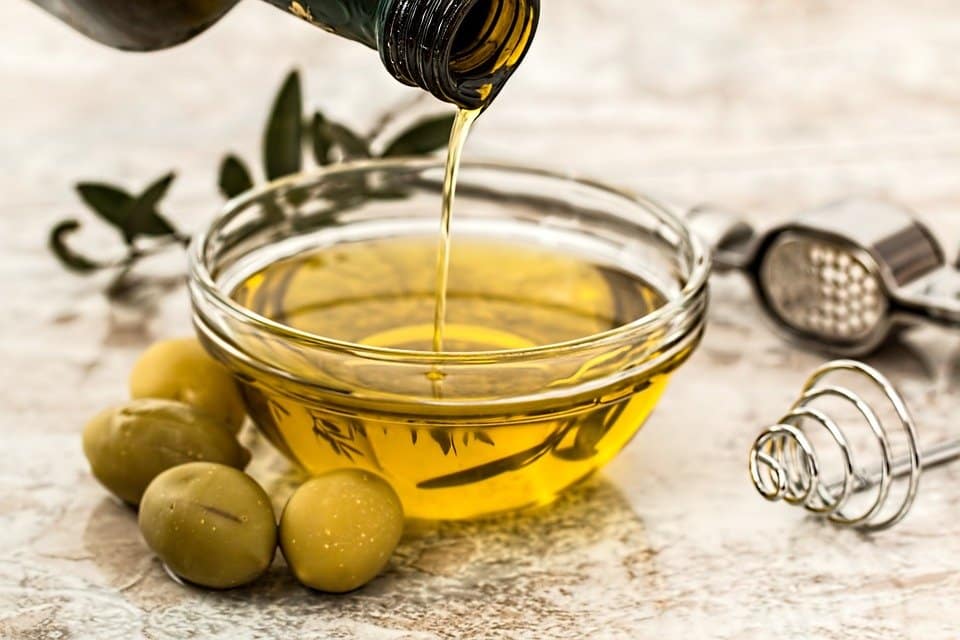Much like fashion, diet trends come and go in cycles. Keto, for example, is like baggy jeans in the late 90’s: it’s all the rage. But this isn’t the first time that keto has had its moment in the sun or been a popular trend, and it sure won’t be the last. At the core of the keto movement is the importance of what was once the health demon of the 1980s and ’90s: fat.
Most health trends aren’t all that they seem. It’s hard for a headline to paint an accurate and nuanced picture that is so often needed when talking about health and wellness. That goes for plenty of things, but it’s especially true in the world of nutrition, and fat, specifically.
Fat is one of the more misunderstood pieces of the nutrition world. That’s not only the case when we’re talking about the role that dietary fat can play in the weight loss world, but also when talking about overall health and well-being, and especially heart health. That old phrase “we are what we eat” rings true. The foods we eat on a regular basis become the building blocks for our bodies, all the way down to the cellular level. This means we can eat to be stronger or more fit, but in the case of nutrients like fat, we can also eat to protect our internal organs. So this week we’re going to be taking a brief look at the role dietary fat plays in our diets and weight loss goals, as well as how dietary fat can impact our heart health.
What role does dietary fat play in our weight loss goals?
At their core, fats are essential to health and survival. Humans can’t live without fats. We need them for cellular health, brain function, hormonal health, recovery, and they are the densest source of energy in our diets.
Fats are actually the energy source that we depend on most of the time when we’re living and breathing. When you’re sitting down reading this blog post your body is using fat to fuel all of the necessary processes it uses to keep you alive. The same goes for when you’re walking or doing any activity that doesn’t really get your heart rate up by very much. Which should be enough to explain just how important fat is to helping someone stay alive on a day to day basis.
But, just because you need fats to survive doesn’t mean that you should go dunking a stick of butter in your morning coffee, despite what you might have seen someone do or say on the Internet.
See, when we talk about weight loss, we’re implicitly talking about creating a calorie deficit, because that’s how the weight loss process works. But anyone who has ever attempted to lose a significant amount of weight knows that getting into a calorie deficit may be simple, but that doesn’t make it easy. Fats tend to be the culprit that undo most diets because they’re the highest in energy and the least satiating, making them the easiest to overeat.
A great example of this is that it’s a common thing when people start logging their food intake on a consistent basis to be surprised by just how much fat, not sugar, they were previously eating on a daily basis.
Here’s a general breakdown to give you an idea of why we prioritize certain things:
- Protein: 4 calories per gram and the most satiating.
- Carbs: 4 calories per gram and a little less satiating, and even this varies depending on the source. Veggies are definitely more filling than sugar, after all.
- Fat: 9 calories per gram and the least satiating.
We certainly don’t mean to paint a bleak picture of fat intake and how it plays into our diet, though. After all, we know that fats are necessary for survival. Along with that, fats are also tasty! We’ve evolved to enjoy the taste of fat, and that’s especially true when fat is paired with other food sources like sugar. So just because fat is easy to over-eat doesn’t mean that it’s something we should avoid completely. That’s a recipe for disaster. Instead, it’s on us to learn how fat fits into our own personal taste preferences and how that aligns with our goals.
But what about the role that fats play in heart health?
There is no component of our diet that is linked to heart health more than fat. What’s more, when we talk about our heart health, there seems to be conflicting information from all kinds of different sources. We hear we should avoid certain foods or certain fats one day. Then the next day we hear that we shouldn’t be avoiding fat, but should actually be eating more fat. So what is true?
To clear things up, we’re going to get an overview of the sources of dietary fat in our diet and see what the research says. Because while it’s certainly a win to cut calories and get to a healthy body weight, knowledge is power. And if begin to gain a better understanding of the foods we eat on a daily basis, we’re better prepared to take care of ourselves in the long run.
Saturated fats
Saturated fats get their name because saturated with hydrogen molecules. Saturated fat comes from animal sources, such as red meats, poultry, lard, and full-or-reduced fat dairy products.
An easy way to identify saturated fats is that they’re solid at room temperature. So things like cheese and butter are great examples. Oils that are solid at room temperature, like palm oil, palm kernel oil, and coconut oil, also contain saturated fats.
The American Heart Association (AHA) recommends getting only 5 to 6 percent of calories from saturated fat because saturated fat is linked to elevated cholesterol levels and in some cases an increased risk of cardiovascular disease. So, if we take the 5 to 6 percent guideline seriously, this puts someone on a 2,000-calorie-a-day diet with 120 calories or 13 grams of saturated fats per day. The 2015-2020 U.S. Dietary Guidelines recommend for up to 10 percent of calories per day to come from saturated fat.
Monounsaturated fats
These fats get their name because they are not saturated with hydrogen molecules and because they have a single carbon bond in the fat molecule, called a double bond. Monounsaturated fats are liquid at room temperature and are found in fat sources like canola, peanut, and olive oil.
Monounsaturated fats are most commonly known to have a heart-protective role and for good reason. According to the Mayo Clinic, they have been linked to improved cholesterol levels and they may also help insulin and blood sugar control.
But just because monounsaturated fats tend to be heart-protective doesn’t mean that we have clearance to eat them freely and with reckless abandon. At the end of the day, from a caloric perspective, fat is still fat. Which means it’s still important to watch our intake of monounsaturated fats. You can eat all the monounsaturated fats you want, but if you’re still overeating on a consistent basis that leads to weight gain, which can wind up increasing your risk of cardiovascular disease.
Quick aside: How much fat should I be eating?
Answer: Assuming you’re tracking your food and controlling calorie intake, fat intake can vary person to person. But a good general recommendation is the range of .25-.5g per pound of body weight.
Polyunsaturated fats
Like monounsaturated fats, polyunsaturated fats aren’t saturated with hydrogen molecules. Polyunsaturated fats get their name from having more than one carbon bond in the fat molecule, and like monounsaturated fats, they’re liquid at room temperature.
The easy way to think about polyunsaturated fats is that they’re found mostly in plant food sources. Things like soybeans and soybean oil, sunflower oil, sunflower seeds, walnuts, and flaxseeds. They’re also in fatty fish like salmon, tuna, herring, mackerel, and trout.
Polyunsaturated fats have been shown to have a positive impact on blood cholesterol levels, which can lead to a decreased risk of cardiovascular disease. Polyunsaturated fats have also had their moments of popularity in the news because they provide other essential fatty acids that plenty of us have heard of: omega-6 and omega-3
Omega-3 fatty acids
Omega-3 fatty acids are a polyunsaturated fat that can come from plant-based sources but are most commonly found in fish. Omega-3 fatty acids have long been thought to be a major factor in improving our overall health, and like other polyunsaturated fat. been shown to lower blood pressure levels.
Omega-3 fatty acids can also act as anti-inflammatories in the body. On a cellular level, omega-3 fatty acids work kind of like aspirin to inhibit an enzyme that produces hormones that trigger inflammation. But this doesn’t necessarily make them a cure-all specifically because of inflammation, which is complex and multi-factorial.
We get omega-3’s from cold-water fish like salmon, herring, tuna, and mackerel, as well as walnuts, olive oil, and canola oil. There are also plenty of people who take fish oil to up their omega-3 intake, though recent research on supplementing with fish oil is questioning that.
As a general guideline, the American Heart Association recommends eating 3.5 ounces of fish at least twice a week to get a good amount of omega-3s.
Omega-6 fatty acids
On the flip side of omega-3’s are omega-6 fatty acids, which are also polyunsaturated fats, usually found in plant-based oils. Common sources of omega-6’s include vegetable, corn, peanut, grapeseed and sunflower oils, as well as things like mayonnaise and plenty of salad dressings.
In excessive amounts, some types of healthy-omega-6 fatty acids may cause the body to produce inflammatory chemicals, according to the University of Maryland Medical Center. This is important to note because in general, Americans get far more omega-6 fatty acids than necessary and far too few omega-3s. It’s not to say that omega-6’s are a dangerous compound we need to eliminate completely because that’s not the case at all. But this is to say that for some, the balance between omega-6 and omega-3 is worth paying attention to. The American Heart Association recommends that between 5 and 10 percent of calories come from omega-6 fatty acids.
Trans fats
For just about every source of fat out there the research says that they’re neither good nor bad. There are layers and layers of context that determine how a source of fat fits into our diet. The one source of fat where that isn’t the case is trans fats.
Trans fats are sometimes found naturally in meats or dairy, but usually in small amounts. More typically, trans fats are produced by the food industry for the purpose to increase shelf life of a processed food product. This is done by adding hydrogen to liquid vegetable oils to make the oils more solid. These are called partially hydrogenated oils. Trans fats are usually found in convenient and pre-packaged foods like frozen pizzas. Other common sources of trans fats include baked goods, crackers, refrigerated dough, margarine, and coffee creamer. Fast food restaurants often use them in deep fryers because partially hydrogenated oil does not have to be changed as often as regular oil.
Trans fats are typically not recommended at all because they have a stronger link to heart disease. According to the AHA, they both lower your good cholesterol and increase your bad cholesterol. The potentially harmful role that trans fats play in the body has reached such a consensus that in 2013, the FDA took a major step and decreed that partially hydrogenated oils were no longer considered safe.
A final word on fat
The world of dietary fat, triglycerides, cholesterol, and how all of those things come together to make up the overall picture of your heart health can feel hopelessly confusing at times. That’s especially true when the popular diets of the time preach the wonder of unlimited amounts of fat, which can feel deeply confusing when we compare that to the more nuanced advice we get from doctors and researchers. This is partly because internal health is incredibly nuanced. It’s hard to give blanket recommendations on what sources of fat any single person should be eating more or less of because that is entirely dependent on their own individual health markers, family history, and genetics.
But just because we’re not in the business of giving blanket recommendations doesn’t mean you should give up all hope or stop trying to learn more about something like the various sources of dietary fat. Health, like many other things in life, is a process of continually learning. Through that learning comes awareness. And through that awareness, we can begin the process of taking charge and changing our health.
Blogs like this are a good jumping-off point to learn more about the things we eat and what happens inside our bodies, but they only scratch the surface. So if you’re interested in taking charge of your health and learning more about what is happening inside your body, first start by consulting your doctor and getting a detailed workup. Go over the results with your doctor and get their insight into what your results say.
Interested in learning more about Stronger U? Email us at info@strongeru.com or to schedule a free informational phone call with someone on our Member Experience Team just CLICK HERE! Can’t wait to hear from you!








